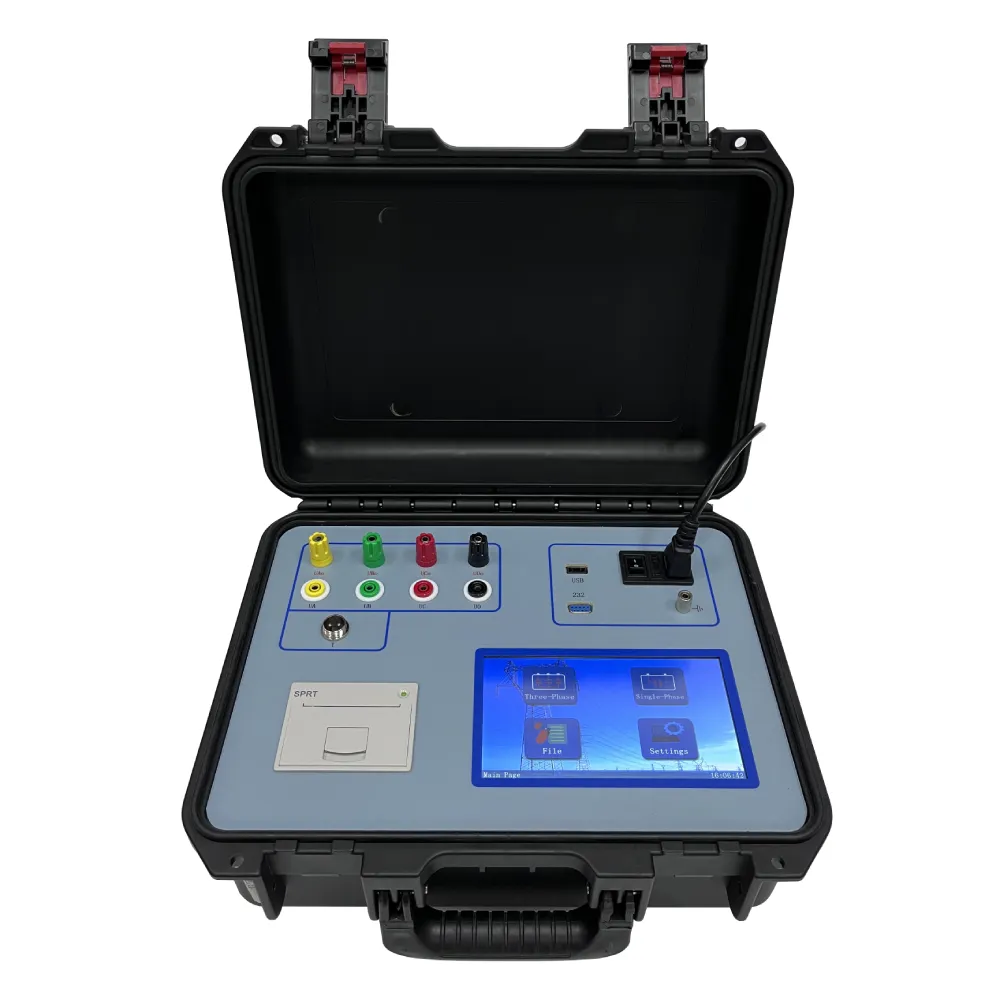 English
English


Analysis of Transformer Polarity and Ratio Testing for Improved Electrical Performance and Reliability
Ratio and Polarity Test of Transformers
Transformers are essential components in electrical power systems, responsible for changing voltage levels to ensure efficient power transmission and distribution. To ensure their reliable operation, two crucial tests are conducted the ratio test and the polarity test. These tests help confirm that the transformer functions correctly and safely, maintaining the integrity of electrical systems.
Ratio Test
The ratio test is fundamental in assessing the transformer's voltage transformation capabilities. This test verifies that the ratio of primary to secondary voltages is consistent with the transformer's specifications. The voltage ratio is paramount as it defines the transformer's capability to step up or step down voltages, allowing for effective electricity distribution over long distances.
To perform the ratio test, the primary winding of the transformer is energized either with a known voltage or through a testing device, while the secondary winding is left open-circuited. The voltage is measured across both windings, and the ratio is calculated. For a transformer with a turns ratio of 101 (for example), applying 10 volts to the primary should yield 1 volt on the secondary side.
Any significant deviation from the expected voltage ratio can indicate problems such as winding defects, short-circuits, or other electrical malfunctions
. By conducting the ratio test, engineers can ensure that transformers operate within their designated performance parameters, reducing the risk of failure during operation.Polarity Test
ratio and polarity test of transformer

The polarity test is equally critical, focusing on determining the phase relationship between the primary and secondary windings of the transformer. Correct polarity ensures that connections in the system support the expected phase alignment, preventing potential issues, such as phase opposition, which can lead to power losses or even system failures.
The polarity test is traditionally performed by connecting the primary winding to a low voltage source and measuring the voltage across the secondary winding. Depending on the connection method (delta or wye), the transformers may exhibit different voltage behaviors under loading conditions. The goal is to verify that the transformer’s windings are oriented in such a way that their magnetic fields assist rather than oppose each other.
For instance, if the primary and secondary voltages are measured, and the resultant secondary voltage is in phase with the primary, the transformer is said to be “in phase.” Conversely, if there is a phase difference, adjustments may need to be made to ensure correct operation. This is particularly important when transformers are connected in parallel, as mismatched polarity can lead to circulating currents that could damage the equipment.
Importance of Testing
The ratio and polarity tests of transformers are not just routine checks; they are vital for ensuring the overall reliability of the power systems. Regular testing can help identify potential issues before they escalate into significant problems, thereby enhancing operational safety and efficiency. Additionally, the tests provide documentation that can be crucial for maintenance records and compliance with industry standards.
In conclusion, the ratio and polarity tests are integral to transformer maintenance and operation. By assessing voltage ratios and polarity, engineers can ensure transformers are functioning properly, thus contributing to the stability and reliability of electrical power systems globally. Regular testing and verification of transformers not only prolong their lifespan but also enhance the safety of the entire power distribution network.
-
Differences between open cup flash point tester and closed cup flash point testerNewsOct.31,2024
-
The Reliable Load Tap ChangerNewsOct.23,2024
-
The Essential Guide to Hipot TestersNewsOct.23,2024
-
The Digital Insulation TesterNewsOct.23,2024
-
The Best Earth Loop Impedance Tester for SaleNewsOct.23,2024
-
Tan Delta Tester--The Essential Tool for Electrical Insulation TestingNewsOct.23,2024





